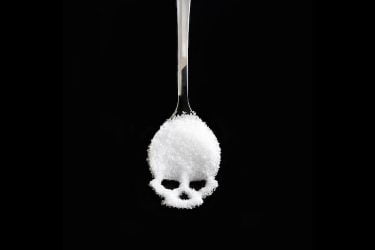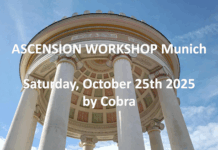
Thousands of studies spanning many decades show excess sugar damages your health,1 yet the sugar industry successfully buried the evidence and misdirected the public with manipulated science. According to the sugar industry, sugar is a harmless source of energy and may even be an important part of a healthy “balanced” diet.
Dr. Cristin Kearns, a dentist and fellow at the University of California, made headlines when she published a paper2 detailing the sugar industry’s historical influence on dietary recommendations. Evidence also shows how the sugar industry influenced the scientific agenda of the National Institute of Dental Research (now the National Institute of Dental and Cranial Research), which back in 1971 created a national caries program, downplaying any links between sugar consumption and dental caries.3
The documentary, “Sugar Coated” — which features Kearns, investigative journalist Gary Taubes, author of “The Case Against Sugar,” and Dr. Robert Lustig, a leading expert on sugar metabolism and obesity — investigates the sugar industry’s once secret PR campaign, showing how it normalized excessive consumption by deflecting evidence implicating sugar as a cause of ill health. As noted in the film’s summary:4
“In order to continue sweetening the world’s food supply, thus securing continued profits, the sugar industry turned to the very same deceptions and tactics lifted from the tobacco industry. Using big sugar’s own internal documents on this strategy, ‘Sugar Coated’ reveals the well-oiled tricks of the trade to confuse the public about what is really driving the global pandemic of obesity, diabetes and heart disease.”
https://www.dailymotion.com/video/x61x56l
Processed Food Is the Primary Source of Added Sugars
In the past three decades, obesity rates have doubled and Type 2 diabetes has tripled. How did this happen? Evidence implicating sugar has steadily mounted, but as noted by Taubes, definitive proof has remained elusive. The lack of indisputable proof — and the manufactured lack of consensus — is what has kept the sugar industry motoring forward, at each turn deflecting suspicions by pointing out conflicting evidence.
Fueling uncertainty has been the primary defense strategy that has allowed the sugar industry to thrive while health statistics plummet. “If the evidence gets definitive, they’re done,” Taubes says. Lustig, a pediatric endocrinologist, teaches that sugar — when consumed in the excess amounts we’re consuming today — acts as a metabolic poison.
Lustig doesn’t really see himself as the “anti-sugar guy,” stressing he’s really anti-processed food. The thing about processed foods is they contain massive amounts of added sugar. Seventy-four percent of packaged foods contain added sugars, which hide under 61 different names, many of which are unfamiliar. Examples include barley malt, dextrose, maltose and rice syrup, just to name a few.
Metabolically, however, there’s no difference between these sugars, Lustig says. Even health foods and baby foods can contain shockingly high amounts of processed sugars.5 Take Krave Jerky, for example. A modest size bag (3.5 ounces) of Krave Chili Lime Jerky contains a whopping 39 grams of sugar.6
What Is Moderation?
Lustig stresses it’s the excessive consumption of sugar that is dangerous, not the sugar in and of itself. But how much is too much? At which point does it become a “poison”? Sugar in “moderation,” he says, would be 6 to 9 teaspoons (25 to 38 grams) of added sugar a day.
This is about the max that your body can safely and effectively process. Europeans consume, on average, 17 teaspoons of added sugar a day. The American average is 19.5 teaspoons a day. For historical perspective, in 1812, people ate approximately 9 grams or just over 2 teaspoons of sugar per day.7
According to a 2014 study,8 10 percent of Americans consume 25 percent or more of their daily calories in the form of added sugars, and those who consume 21 percent or more of their daily calories in the form of sugar are twice as likely to die from heart disease compared to those who get 7 percent or less of their daily calories from added sugar.
The risk was nearly tripled among those who consumed 25 percent or more of their calories from sugar. That means at least 10 percent of the adult population in the U.S. are in this tripled-risk category.
Type 2 diabetes9 and heart disease are not the only ramifications of a high-sugar diet. By triggering insulin resistance, excessive sugar consumption drives virtually all chronic diseases, including nonalcoholic fatty liver disease,10 cancer and dementia.11,12 Research13shows even mild elevation of blood sugar — a level of around 105 or 110 — is associated with an elevated risk for Alzheimer’s.
Moderating your sugar intake is extremely difficult, if not impossible, if you’re eating processed foods and snacks. The film shines much needed light on the fraud that passes for “healthy snacks,” such as fruit gummies, which contain sugar derived from concentrated fruit juice, water and a few added vitamins. While the sugar is derived from fruit, there’s nothing left of the nutrients in the whole fruit. You might as well just give your child a few sugar cubes. There’s really no difference.
How and Why Sugar Replaced Fat
The records unearthed by Kearns reveal that as far back as 1964 — a time when researchers had begun suspecting a relationship between high-sugar diets and heart disease — John Hickson, a sugar industry executive, introduced a plan for how to influence public opinion. Using the same tactics employed by the tobacco industry, Hickson’s plan was to counter adverse findings with industry-funded research, along with directed “information and legislative programs.” “Then we can publish the data and refute our detractors,” he wrote.
One of the strategies used to deflect accusations that sugar caused disease was to shift the blame to saturated fat. In the early 1970s, the sugar industry faced proposed sugar legislation that would impose limits on the sweet stuff.
They also worried about the potential impact of “Pure White and Deadly: How Sugar Is Killing Us and What We Can Do to Stop It,” a book published in 1972 by British nutritionist John Yudkin, in which he presented decades of research pointing at dietary sugar, not fat, as the underlying factor in obesity and diabetes.
As proposed by Hickson, the sugar industry countered Yudkin’s work with a secretly funded white paper called “Sugar in the Diet of Man,” which claimed sugar was not only safe but actually important for health. Again, the key to success laid in preventing a consensus from taking root. As long as there was confusion and uncertainty about sugar’s role in health, regulators were forced to give sugar a free pass.
Sugar Apologists and Defenders Bought and Paid for by Industry
Dr. Fredrick J. Stare, who chaired the department of nutrition at Harvard, played a key role in defending the sugar industry and disseminating its propaganda, all while hiding his close ties to the industry. Stare spoke out against critics on radio and television, claiming breakfast cereal with milk was a healthier breakfast choice than bacon and eggs, for example.
Another major sugar apologist was Ancel Keyes who, with industry funding, helped destroy Yudkin’s reputation by labeling him a quack. The smear campaign was a huge success, bringing sugar research to a screeching halt.
Another Harvard-based nutrition scientist identified in Kearns’ historical analysis as someone paid to produce research for the sugar industry was Mark Hegsted, Ph.D. In 1977, while heading up the nutrition department at the United States Department of Agriculture, Hegsted helped draft an early document that eventually became the U.S. dietary guidelines.
In the decades since, U.S. health officials have urged Americans to adopt a low-fat diet to prevent heart disease; as a result, people switched to processed low-fat, high-sugar foods instead. This, it turns out, is the real recipe for heart disease, yet by taking control of and shaping the scientific discussion, the sugar and processed food industries managed to keep these facts under wraps all these years. The end result is clearly visible in the health statistics of today.
Sugar’s Law of Attraction: The Bliss Point
With saturated fat enlisted as the dietary villain, the processed food industry had to figure out how to remove the fat while maintaining taste. The solution was to add sugar. The ill-advised low-fat craze is a major reason why processed foods are loaded with so much added sugar. Another reason has to do with the creation of food addiction.
The food industry goes to great lengths to scientifically calculate the exact combination of ingredients that will make you crave a product, known as the Bliss Point. Howard Moskowitz, Ph.D., a longtime food industry consultant, is known as “Dr. Bliss.” A Harvard-trained mathematician, Moskowitz tests people’s reactions and finds the optimal amount of sugar for a product.14
Moskowitz’s path to mastery began when he was hired by the U.S. Army to research how to get soldiers to consume more rations in the field. Over time, soldiers were not consuming adequate rations, finding their ready-to-eat meals so boring that they’d toss them half-eaten, and not get all the calories they needed. Through this research, Moskowitz discovered “sensory-specific satiety.” What this means is, big flavors tend to overwhelm your brain, which responds by suppressing your desire to eat more.
However, this sensory-specific satiety is overridden by complex flavor profiles that pique your taste buds enough to be alluring, but don’t have a distinct, overriding single flavor that tells your brain to stop eating. The magic formula gives you “the bliss point,” enabling the processed food industry to make very deliberate efforts to get you to overeat.
Sugar Limits Finally Included in US Dietary Guidelines
While we still have a long way to go, the 2015-2020 Dietary Guidelines for Americans include the recommendation to limit sugar to 10 percent of your total daily calories.15 For a 2,000 calorie diet this amounts to 10 to 12 teaspoons, or just over the amount found in one 12-ounce can of regular Coke. Based on the evidence from some studies, even this amount can trigger health problems, but it’s certainly better than no limit at all. Other health organizations have gone even further.
The National Institutes of Health now recommends kids between the ages of 4 and 8 limit their added sugar to a maximum of 3 teaspoons a day (12 grams). Children aged 9 and older should stay below 8 teaspoons. The American Heart Association recommends limiting daily added sugar intake to:16,17
- 9 teaspoons (38 grams) for men
- 6 teaspoons (25 grams) for women
- 6 teaspoons (25 grams) for toddlers and teens between the ages of 2 and 18
- Zero added sugars for kids under the age of 2
Twenty-five grams of sugar per day is my recommended limit for men and women alike, with the added caveat that if you have insulin or leptin resistance (overweight, diabetic, high blood pressure or taking a statin drug), you’d be wise to restrict your total fructose consumption to as little as 15 grams per day until you’ve normalized your insulin and leptin levels.
Sugar Industry’s Response to Sugar Limits
Not surprisingly, the sugar industry’s answer to all of these sugar limits was to create yet another study18 to refute the validity of the recommendations and keep the uncertainty going.19,20,21,22 As reported by CBS,23 “The study from McMaster University claims that the evidence for prior knowledge in how sugar intake is proportionate with weight gain, across nine public health guidelines, is ‘low quality.’”
“Guidelines on dietary sugar do not meet criteria for trustworthy recommendations and are based on low-quality evidence. Public health officials (when promulgating these recommendations) and their public audience (when considering dietary behavior) should be aware of these limitations …
At present, there seems to be no reliable evidence indicating that any of the recommended daily caloric thresholds for sugar intake are strongly associated with negative health effects. The results from this review should be used to promote improvement in the development of trustworthy guidelines on sugar intake.”
Ironically, the only “limitation” listed for this study24 was that “The authors conducted the study independent of the funding source, which is primarily supported by the food and agriculture industry.” Essentially, what they were saying is that, yes, the study was funded by the food industry, but trust us, we were completely impartial.
A corrected version of the disclosure statement revealed ILSI actually both reviewed and approved the scope of the protocol for the study.25 AP News also discovered that one of the authors, Joanne Slavin, a professor at University of Minnesota, failed to disclose funding in the amount of $25,000 from Coca-Cola in 2014.
Slavin also did not disclose a grant received from Quaker Oats, owned by PepsiCo, nor did she include her work on a 2012 ILSI-funded paper on sugar guidelines. Meanwhile, she did disclose a grant from the Mushroom Council.
Review Shows Massive Research Bias Based on Funding
If you’re at all inclined to take Slavin and her coauthors on their word, consider the following study published in November 2016: The paper, “Do Sugar-Sweetened Beverages Cause Obesity and Diabetes? Industry and the Manufacture of Scientific Controversy,”26reviewed 60 studies published between 2001 and 2016 to examine the links between funding and study outcomes.
“We comprehensively surveyed the literature to determine whether experimental studies that found no association between sugar-sweetened beverages and obesity- and diabetes-related outcomes (negative studies) are more likely than positive studies to have received financial support from this industry,” they write.
The results? Of the 60 studies, the 26 that found no link between sugary drinks and obesity or diabetes were all funded by the beverage industry; of the 34 that did find a relationship, only one had received industry funding. In conclusion, they noted that: “This industry seems to be manipulating contemporary scientific processes to create controversy and advance their business interests at the expense of the public’s health.”
Some of the studies giving sugar a free pass have industry fingerprints clearly visible all over them. For example, one paper27 came to the highly unlikely conclusion that eating candy may help prevent weight gain. The source of the funding reveals the basis for such a bizarre conclusion: The National Confectioners Association, which represents candy makers like Butterfingers, Hershey and Skittles.
Coca-Cola and Pepsi-backed research has also come to the highly improbable and irresponsible conclusion that drinking diet soda is more helpful for weight loss than pure water.28
When you consider that following the proposed sugar guidelines (restricting sugar to 5 or 10 percent of daily calories) would cut junk food companies’ profits by half,29 it’s easy to see why they’re willing to go to such obnoxious lengths to try to mislead you about the science. Greed is no excuse, however, and it’s high time everyone stopped buying into the sugar industry’s carefully plotted misdirection campaigns.
Crush Your Sugar Addiction
Sugar causes very real damage to your body and cells, and the addiction to the substance is also very real. There are several strategies you can use to reduce or eliminate your intake of added sugars, while still enjoying your meals and feeling satisfied after eating.
Educate yourself on the health impacts of sugar Making permanent changes to your lifestyle and nutritional choices is easier when you know the why behind the change. You can see a quick list of the 76 different ways sugar negatively impacts your health in my previous article, “The Truth About Sugar Addiction.” |
Reduce net carbs Your net carbs are calculated by taking the total grams of carbs and subtracting the total grams of fiber. By keeping your net carbs below 100 grams per day, and for a healthier diet as low as 50 grams per day, you will reduce your cravings for sweets. To learn more, including the importance of cycling in higher amounts of net carbs once you’ve become an efficient fat burner, see “Burn Fat for Fuel.” |
Eat real food If a food is boxed, canned or bottled, it’s likely also been processed and may include added sugar. Whole, organic, non-GMO foods provide your body with the nutrition you need to function optimally and natural sugars bound to fiber that reduces your net carbs. |
Read labels On processed foods you do purchase, scour the label for ingredients that represent sugar to evaluate the total amount. The less sugar you eat, the less you’ll crave. |
Use safer sweeteners Not all sugar substitutes are created equally. Avoid using artificial sweeteners such as aspartame. Safer alternatives include Stevia, Lo Han Guo (also spelled Luo Han Kuo), and pure glucose (dextrose). Contrary to fructose, glucose can be used directly by every cell in your body and as such is a far safer sugar alternative. It will, however, raise your net carb intake. |
Reduce the sugar you add gradually If going cold turkey hasn’t worked for you in the past, try slowly reducing the amount of sugar you add to your drinks. This helps give your taste buds time to adjust to drinking your favorite tea or coffee without the added sweetener. |
Increase healthy fat intake Fat increases satiety, reducing cravings for something sweet afterward. Avocados, coconut oil, nuts and seeds increase your healthy fat content, fill you up and reduce your sweet cravings. |
Include fermented foods Fermented foods support your digestive health and improve your gut microbiome, and the sour taste naturally helps reduce your sweet cravings. |
Try Turbo Tapping Emotional and stress eating is not uncommon. Using Emotional Freedom Techniques (EFT), you can address your stress levels and the discomfort you may feel from giving up junk foods in your diet. Turbo tapping is a form of EFT designed specifically for sugar addiction and is well worth a try if you’re struggling to give up soda and other sweets. |
Disclaimer: We at Prepare for Change (PFC) bring you information that is not offered by the mainstream news, and therefore may seem controversial. The opinions, views, statements, and/or information we present are not necessarily promoted, endorsed, espoused, or agreed to by Prepare for Change, its leadership Council, members, those who work with PFC, or those who read its content. However, they are hopefully provocative. Please use discernment! Use logical thinking, your own intuition and your own connection with Source, Spirit and Natural Laws to help you determine what is true and what is not. By sharing information and seeding dialogue, it is our goal to raise consciousness and awareness of higher truths to free us from enslavement of the matrix in this material realm.
 EN
EN FR
FR


























And the controllers of this planet have made sure that they ply us with HFCS, sugar made from genetically modified corn (spliced into the gene of the corn is the pesticide glyphosate courtesy of evil Monsanto). Food industries use HFCS. The producers of HFCS made sure that the price is very inviting for food manufacturers. It is the cheapest sweetener to make sure we are all eating glyphosate at every turn. Agenda 21, do I need to remind you?